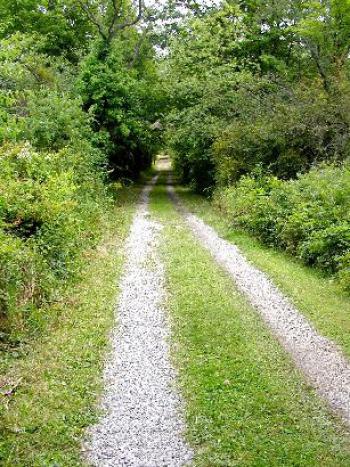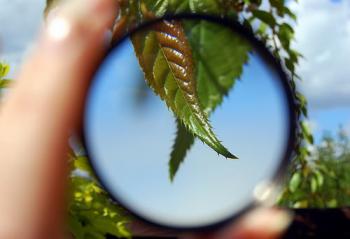Serendip is an independent site partnering with faculty at multiple colleges and universities around the world. Happy exploring!

Notes Towards Day 26 (Tues, Dec. 11): Working on our Presentations
Today we will continue the work we begin in Jody's class: planning for
the presentations we'll be doing for the whole college community:

Final debrief of the Canery
As we are approaching the end of semester, we stand at the cross rod to really think back and evaluate what we have done this semester.
Last Thursday, when were discuss a text about participatory action research by Lois Weis and Michelle Fine in Working Method, we touched based upon many critical questions about the effects and purpose of our art workshop in prison. I want to expand more on that topic as well as our last workshop.
Firstly, one valued was emphasized was to be able to challenge the traditional power relationship. Such a statement was very easy to say but hard to execute. In our case, two groups of women were brought together and doing the same art project corporately. Various background and social status were mixed in the room and conflicts were expected. I don’t know which group benefits more from such a gathering. However, we can’t that each one us were able to see a different side of the concept were talking about form others, For me, even their positions in this society were inmates. I was able to, for the first time, to have “real-life” interpretation of what dies justice system do to individuals’ lives.

Make-up of the post from November 29th
I am really trying to make up the two posts I missed for Barb’s class
I think want to reflect more on the last last Friday’s discussion about looking-glass identity transformation inside the prison. The reading was very comprehensive and easy to read however the indications behind all text are very provoking and indeed caused many disagreement and tensions.
Two important things were mentioned throughout the text which I think are really relevant to our conversation: labeling and rehabilitation.

Memo #2 image
This memo, I was trying to emplore the similarities and differneces between our Canery visits and Visiona dn Alliance in Offending women. I found when comparing either two of these three, many interesting anf similarities appear. However, the length of the porgrma made the final differnece.  I am not sure whihc road( the porgram) will take womne furhter.
I am not sure whihc road( the porgram) will take womne furhter.

Memo #1 image
 In the first week's memo, I talked about viewing the issues of disadvantagous class with differnet lences. Through the socialeconomic lence or historical lences, we will be able to see the differnece elements that might not be as obvious as it should be in other lences. Also, it's important ot consider question from various perspectives.
In the first week's memo, I talked about viewing the issues of disadvantagous class with differnet lences. Through the socialeconomic lence or historical lences, we will be able to see the differnece elements that might not be as obvious as it should be in other lences. Also, it's important ot consider question from various perspectives.

On Silence and Resistance- reflections on Linda-Susan Beard
As beautiful as the idea of being comfortable with silence is, wrapping my head around actually performing silent activities is a different story. I was impressed by how fulfilling silence is for Linda-Susan Beard, and I thought a lot about my own restorative practices. For me, talking has always been restorative. Not shallow or surface conversation, but the kind of talking where two people come together form a different kind of understanding. For me, thinking has always been a vocal and collaborative process rather than a silent and internalized one. I was told once that there have been studies done on cats where a cat was placed in a room with no stimuli and they were essentially brain dead- no activity went on when there was nothing stimulating a response. I can’t remember who told me this or even if it’s true, but when I’m alone, I feel like those cats. I feel muted, stunted- that without the benefit of another person to think with me, I’m unable to think fully. After hearing Linda-Susan Beard talk about how fulfilling silence was for her, I wondered if we were both talking about the same kind of restoration, even if we achieved it in different ways. She spoke of feeding off of silence in a way that seemed very similar to how I feed off of conversation; it is sustaining.

"Placing" Your Body- Reflections on our Blind Tour
Negative spaces have always been interesting for me, not only in an artistic sense but in as an everyday occurrence- I think they speak volumes, especially about people. I’ve always liked seeing and observing what spaces exist between people. However, I had never thought about “hearing” or “feeling” negative spaces. I’ve been thinking a lot about blindness and the way in which not seeing necessitates you to “place” your body- it becomes all the more important to understand where you are, what is around you and where you are going. The environment you are in no longer becomes the background but a very important foreground. The only reason I knew where I was a given time was based on sounds and light variations. I knew we were near the road when I could hear cars, and I knew from the sound of the wind in the trees in my right ear that senior row was to the left of us. I knew we were in the woods and under senior row when the ever-present dot of light representing the sun flickered from interfering leaves and trees. When we were told to beware of an intrusive object possibly in our path, I instinctively and reflexively would put out my hand, in hopes that I could “feel” my place and know where not to walk. Finding these negative spaces through feeling and hearing instead of vision becomes necessary to find the safe spaces, in order to place your body within a context or environment.



